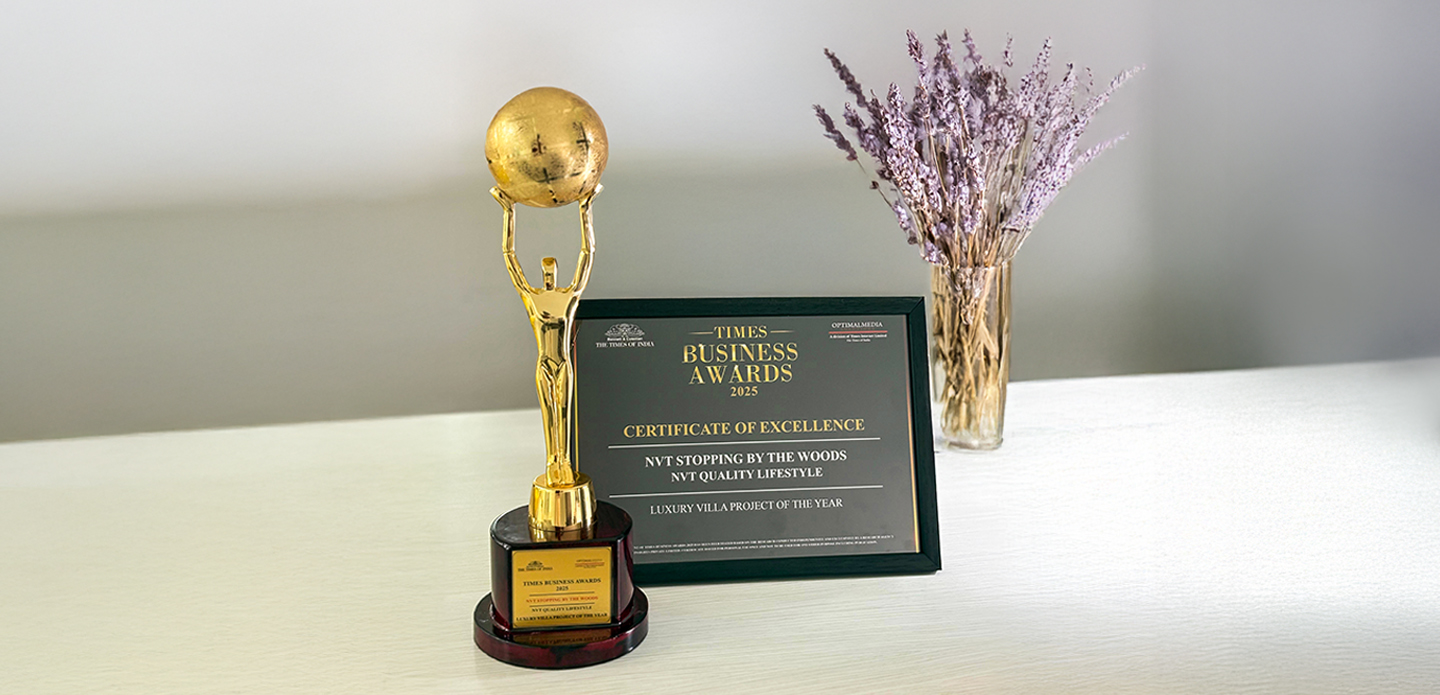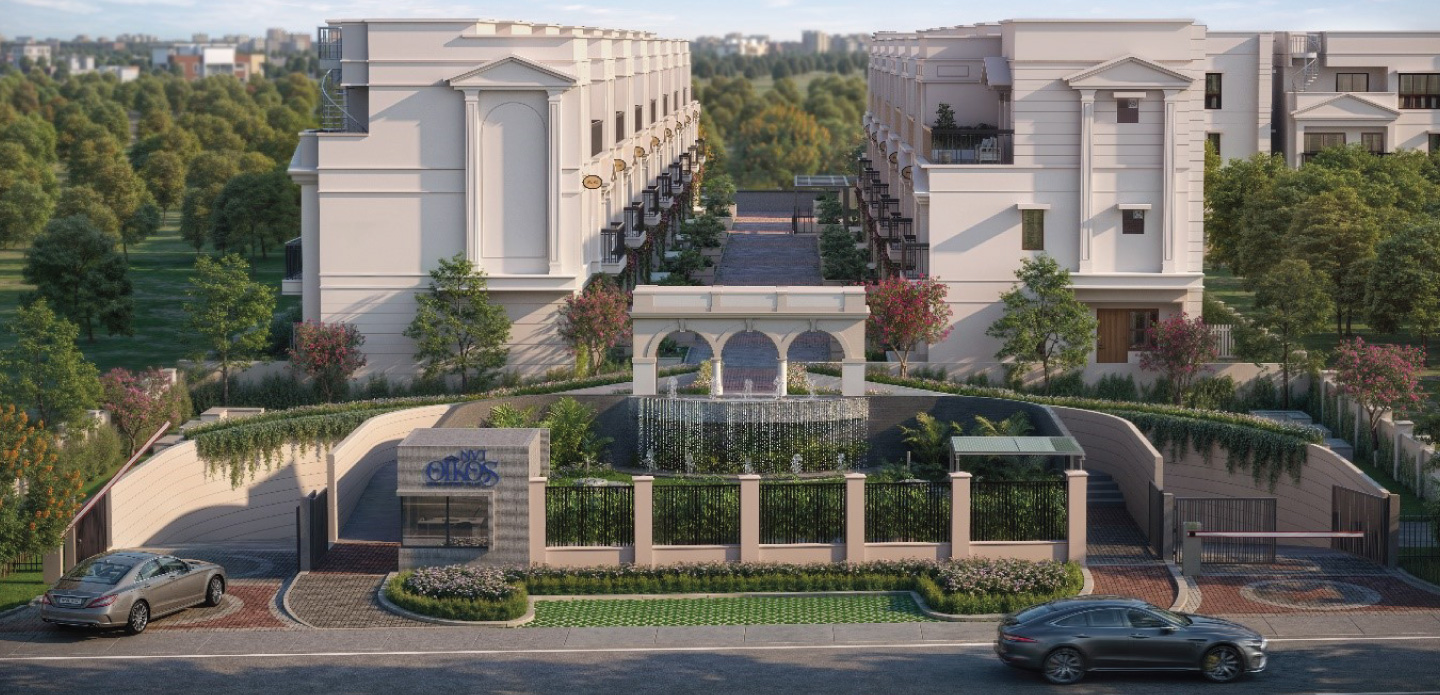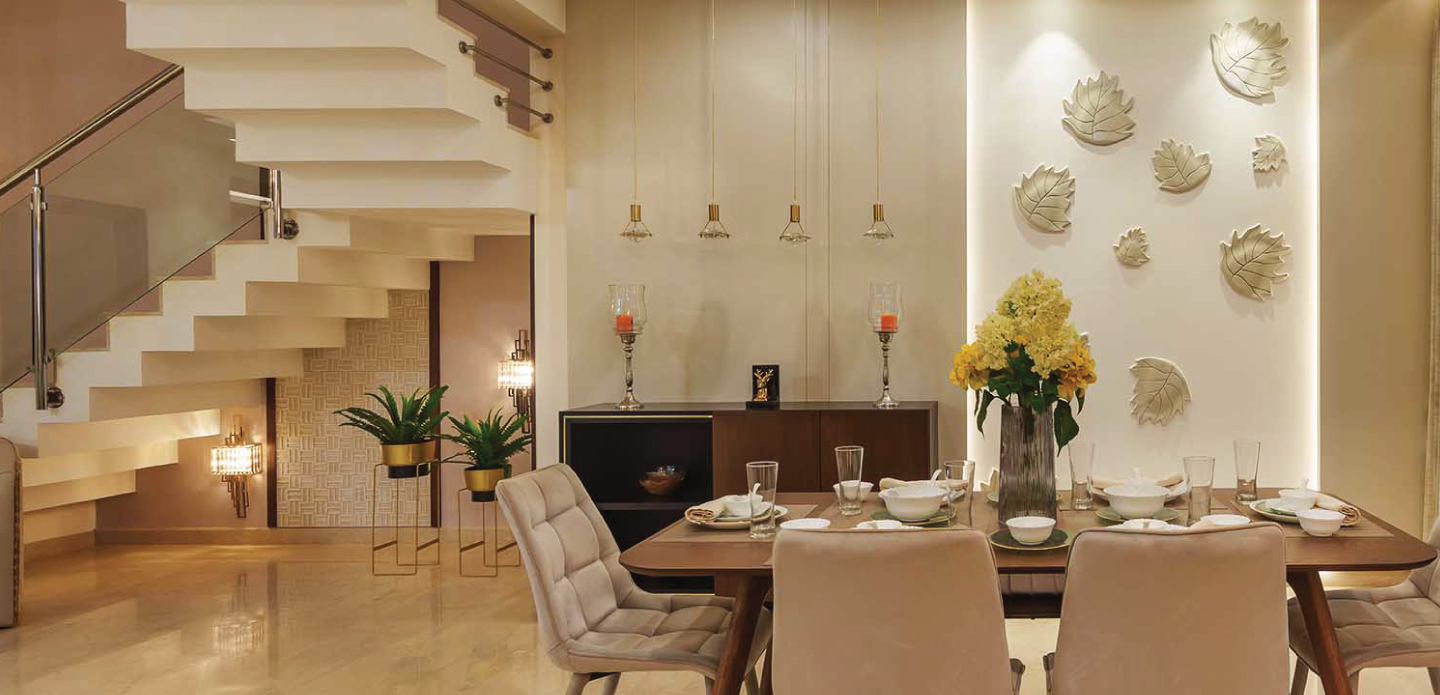Put Your Balcony & terrace to work so you don’t have to buy chilly. ever again. (And a few more vegetables)
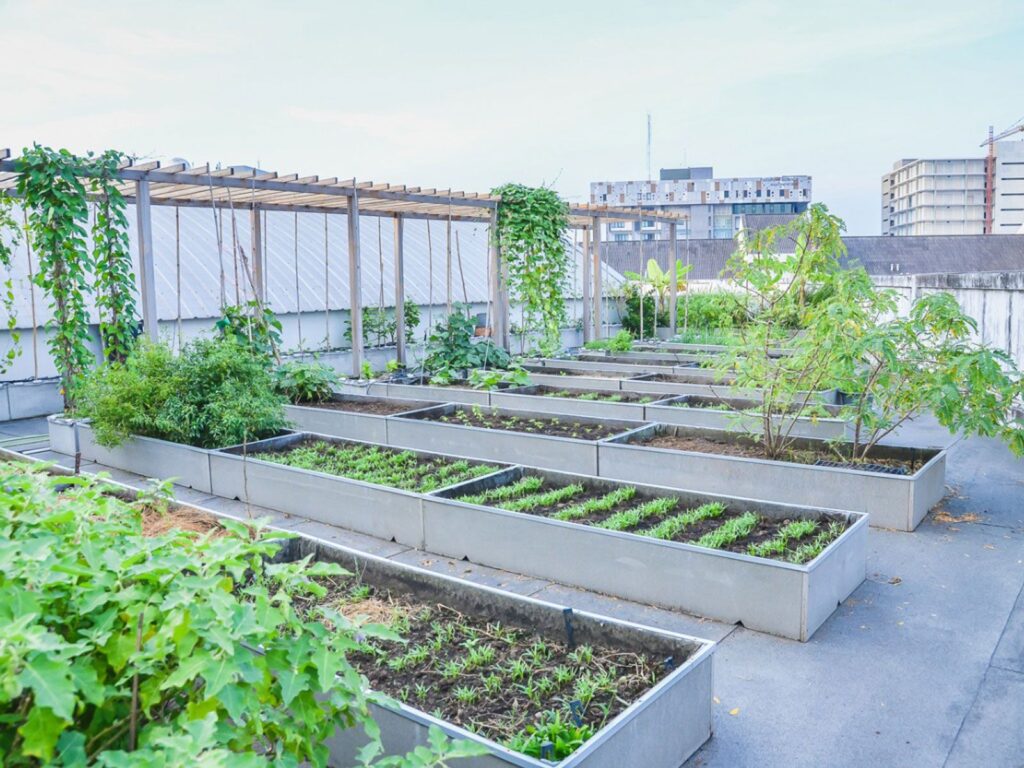
Social media is flooded with images of people harvesting spinach, parsley, methi, and a variety of microgreens, space not being a constraint. One of the positive ways to keep ourselves engaged at home during this time. Are you wondering —
How do I get started with balcony or terrace gardening?
What vegetables are the easiest to grow?
What is the 50:30:20 soil mix people keep referring to?
Do I have a green thumb?
What gardening tools should I buy?
If you want to hop on the grow-your-own bandwagon but are drowning in self-doubt and overwhelmed by the guides out there, don’t fret. The landscaping experts at NVT have put together the essentials in this post to get you started on a small scale on your terrace. You’ll still have to make a trip to the grocery store to buy veggies but this will give you the confidence to become self-sufficient in easy ones like chilly and curry leaves.
Roll up your sleeves; your hands are bound to get dirty (literally) and let’s get started, shall we?
Size matters

Planning is the key, as in any activity. Analyse the space you have to see how to make efficient use of it. If you are building your home, you can design your rooftop in a manner that can take the extra load. Plan to have sprinklers built-in with a control outside the house so the plants can be watered even if you are on vacation or install a drip-irrigation system if your budget allows it. You can also have a planter box constructed in concrete if your house is in the construction stages.
Planter boxes are fixed and will give you more depth than a pot to grow fruit trees. Their fixed nature can also be taken advantage of as a privacy shield consisting of trees in the future. It also gives you the freedom to grow more in a limited space compared to a cluster of pots.
plan the layout
If you have multiple balconies or terrace, you should choose the one that receives the right amount of heat and sunlight. Before you start, check the sunny and shaded areas and accordingly, plan a layout of how you will place your pots. East and west balconies or sides of the terrace work best for plants. The northern and southern sides receive sunlight only six months of the year and are not the ideal ones.
How to prep and waterproof the Roof
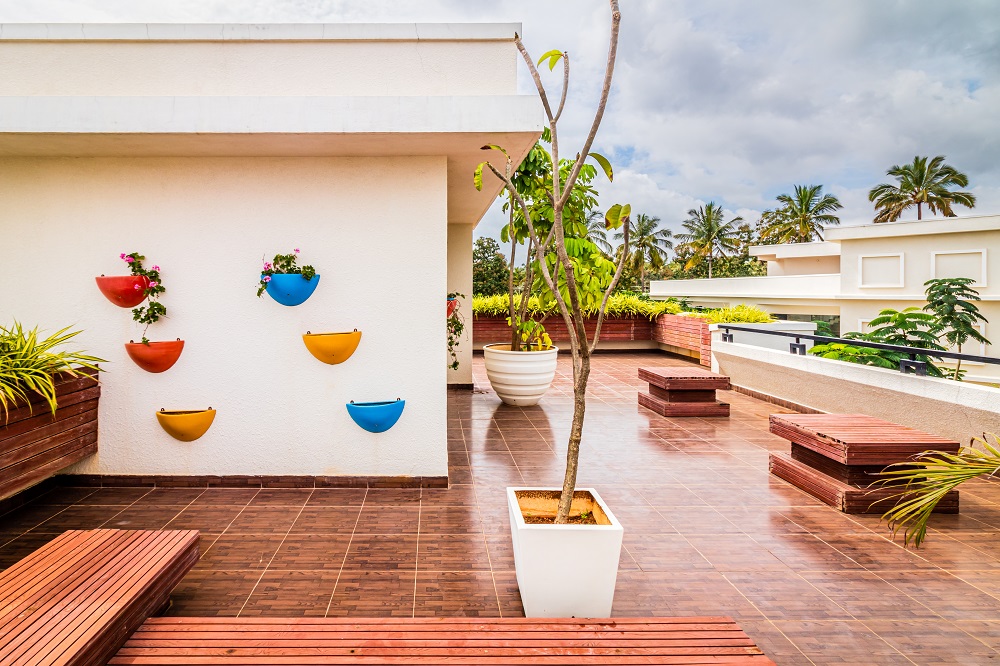
Building a garden involves the process of building one layer after the other, each with an own purpose. Now that you have decided a designated layout for gardening, start with waterproofing the terrace and make it leakage-free, so that your building is protected from any damage. If one has a larger terrace, it would be better to seek experts for waterproofing.
The six-stage curing process we follow across our villas are as follows:
- Clean the surface, loosen the mortar from the slab.
- Raise the level of the corners to ensure that the water run-off is smooth.
- Leave the area for 48 hours to check for seepage.
- Then apply the primer- Ardex WPM 300 when the first layer of waterproof chemical with mesh goes on the surface.
- The last layer of waterproofing chemical WPM 002 cements the floors.
- Finally, apply another layer of WPM 002 to ensure a perfectly waterproofed surface.
And the Terrace Gardening Begins . . .
Now that the base of the garden is ready, start your gardening with simple steps and let the idea become bigger and bigger with time. Planters or pots can be best for terrace gardening initially. So get pots from your nearby nursery or search for any unused containers at the kitchen. Fill in the pots with the required soil mix according to the plants you wish to grow. Prepare the potting mix with organic manure, sand and soil with compost. Wet the soil and sow the sapling or seeds and check regularly.
Decide on the Planter type
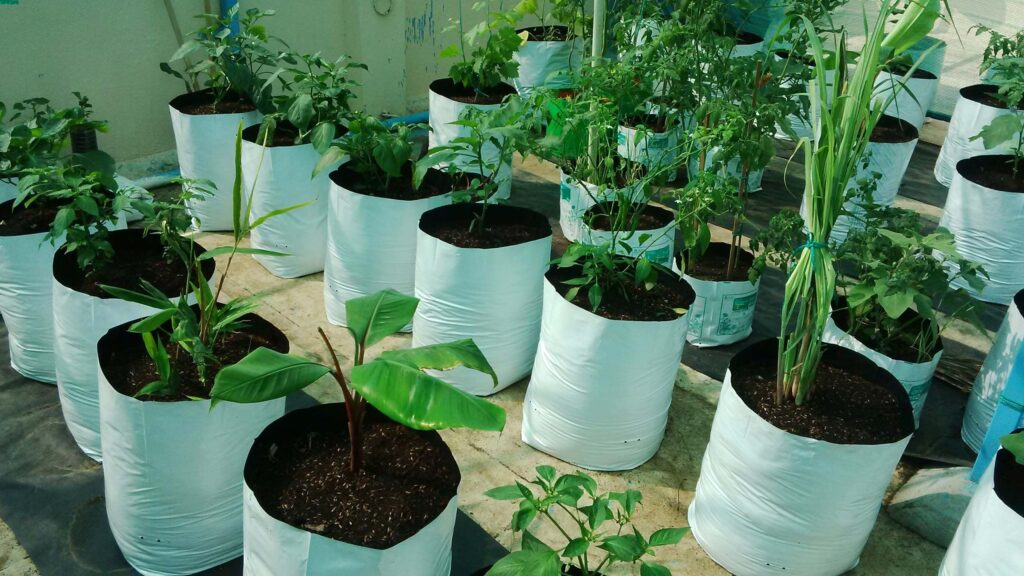
Slowly when you will expand your garden, remember to use the types of planters depending on the plants you’re growing. Wooden planters remain moist and cool, terracotta pots are heavy and offer more beautiful patterns and plastic planter are light in weight, colorful and low-cost. Clay planters are fragile but more natural.
Watering your plants – when and how?
- Try to water your plants in the morning to avoid water loss from evaporation.
- Try avoiding chlorinated water for plants.
- For terrace gardening, you can buy watering equipment like a hose pipe.
- If you don’t get time to water your plants daily, implement drip irrigation.
Bring in the Variety of Rooftop Gardening
- Vertical gardening
- Creating vertical gardens or hanging baskets filled with roses or climbing figs on the walls are ways of the new urban life gardening. In addition to the result of relaxation and serenity, vertical gardening looks perfect and is visually appealing.
- Gardening on raised beds
Raised beds for plants on the terrace are the substitute for the beds in a regular garden. Even if you don’t have enough time for gardening, you can still have a vegetable garden of your own with a raised bed gardening. It’s the easiest way to a plentiful harvest and also, plants thrive with low care and maintenance. When you fill the raised bed with soil, consider preventing pests from entering the bed.
- Container Gardening
Using jars, mugs and other containers to growing vegetables is an effective way of increasing garden space and food production in urban situations. These containers are placed over blocks or bricks to leave a gap between them and the roof for proper drainage and air passage. Edible crops can be grown that take up little space, such as carrots, tomatoes, radishes, and lettuce.
- Soilless Gardening
When people think of gardening, the first thing that comes to mind is the soil. But, plants don’t require it to survive. Soilless gardening is largely done in containers, which makes it much easier for gardeners to isolate infected plants.
5 Easy to Grow Plants at Home
You can grow these vegetables without much effort and it requires less care and maintenance.
Tomatoes
- To start, plant the tomato seeds in a pot 3 to 4 inch deep in moderately fertile soil.
- Mist the seedlings to keep the top of the soil moist, and within 10-12 days, the little plants will sprout.
- For best germination, keep the pot in a dark and warm place.
- As soon as the plants sprout, move into a bigger container of 4-6 inches.
- Now place your container at a place that receives plenty of sunlight.
- Water at least once a day to keep the soil moist.
Coriander
- Take any planter approximately 10 inches deep enough for the roots.
- Make sure that you have plenty of drainage holes at the bottom of the planter.
- Pre-soak the seeds overnight and place it 3 to 4 inches apart while sowing.
- When the soil is dry, water the plants thoroughly until it comes out of the drainage holes.
- It takes around 19-20 days for germination.
Potatoes
- Cut the potatoes into pieces and rest for 24-48 hours before planting.
- Fill the container up to 4-5 inches with rich nutrient soil and place the potato seeds (cut potatoes) on top of it.
- Now cover the potatoes (cut potatoes) with another 4-5 inches potting soil and compost mix.
- Over the weeks, as the plants grow, fill the container little-by-little with the potting soil and compost mix and continue until it reaches the top.
- Keep the soil evenly moist, but not wet.
Chillies
- You can sow chilli seeds from February to April or even before as it needs a long summer to crop well.
- You can directly sow the seeds in a planter or soak the seeds overnight in warm water before planting for best results.
- Transplant the seedlings individually into 3-4 inches pot.
- Water regularly but don’t let the soil to become waterlogged.
Garlic
- Fill the container with a potting mix about 3 inches from the top.
- Remove the skin of the garlic and gently separate the cloves.
- While placing the cloves, put their pointy end up in the soil and pat the soil gently on top of the cloves.
- Position the container in a manner that receives at least 6 hours of sunlight on most days.
- Keep the soil evenly moist, but not wet and maintain it even when the garlic sprouts.
Benefits
Besides giving good quality yield, a terrace garden can be advantageous in so many other ways as well.
- Healthy environment
Plants increase oxygen production. Having a garden means increasing the flow of oxygen and thereby, enhancing the overall quality of air in your surroundings. Also, such terrace garden designs ensure a healthy connection with nature, which greatly reduces your mental stress and tension. Moreover, growing your fruits and vegetables ensures you to consume adequate amounts of healthy greens.
- Reduces indoor temperature
The presence of rooftop garden lowers the temperature of your rooms and also, helps in maintaining a comfortable and pleasing ambience throughout the day. So while you relish the nutrition of fresh homegrown food, you also save on your air conditioning bills.
- Fresh and organic produce
Having a terrace garden gives you access to fresh vegetables and fruits. Nothing tastes better than food cooked with vegetables plucked straight off from the plant, or fruits eaten in its freshest form.
Some Quick Tips
- Water the plants regularly but avoid watering in rains
- Check plants regularly for pests
- Fertilize vegetables with organic fertilizers for healthy growth
- Keep a gap between the containers so that you can water them easily.
- Place your herbs and vegetables according to their resistance towards the sun.
Note: Too much sunlight can be harmful to some plants.
Conclusion
Get serenity and calmness blended with organic and fresh vegetables and a pure air environment! It is a perfect remedy to fight against the daily exhaustive routine and enjoy the stress-free life with ease.
If you have any questions on how to waterproof your terrace before you begin gardening, please leave your comments and our resident experts will answer your queries.
